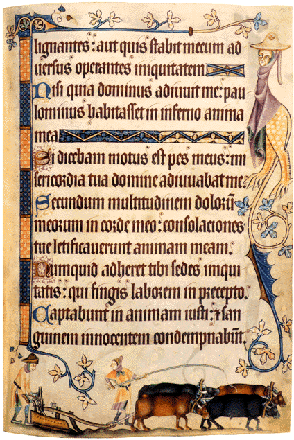
Drolleries
Encyclopedia

Grotesque
The word grotesque comes from the same Latin root as "Grotto", meaning a small cave or hollow. The original meaning was restricted to an extravagant style of Ancient Roman decorative art rediscovered and then copied in Rome at the end of the 15th century...
", are decorative thumbnail images in the margins of Illuminated manuscripts, most popular from about 1250 through the 15th century, although found earlier and later. The most common types of drollery images are those which appear as mixed creatures, either between different animals, or between animals and human beings, or even between animals and plants or inorganic things. Some examples found include cocks with human heads, dogs carrying human masks, archers winding out of a fish’s mouth, bird-like dragons with an elephant’s head on the back. Often they have a thematic connection with the subject of the text of the page, and larger miniatures, and they usually form part of a wider scheme of decorated margins, though some are effectively doodle
Doodle
A doodle is an unfocused drawing made while a person's attention is otherwise occupied. Doodles are simple drawings that can have concrete representational meaning or may just be abstract shapes....
s added later.
One manuscript, The Croy Hours, has so many it has become known as The Book of Drolleries.
Another manuscript that contains many drolleries is the Luttrell Psalter
Luttrell Psalter
The Luttrell Psalter is an illuminated manuscript written and illustrated circa 1320 – 1340 by anonymous scribes and artists...
, which has hybrid creatures and other monsters on a great deal of the pages.

